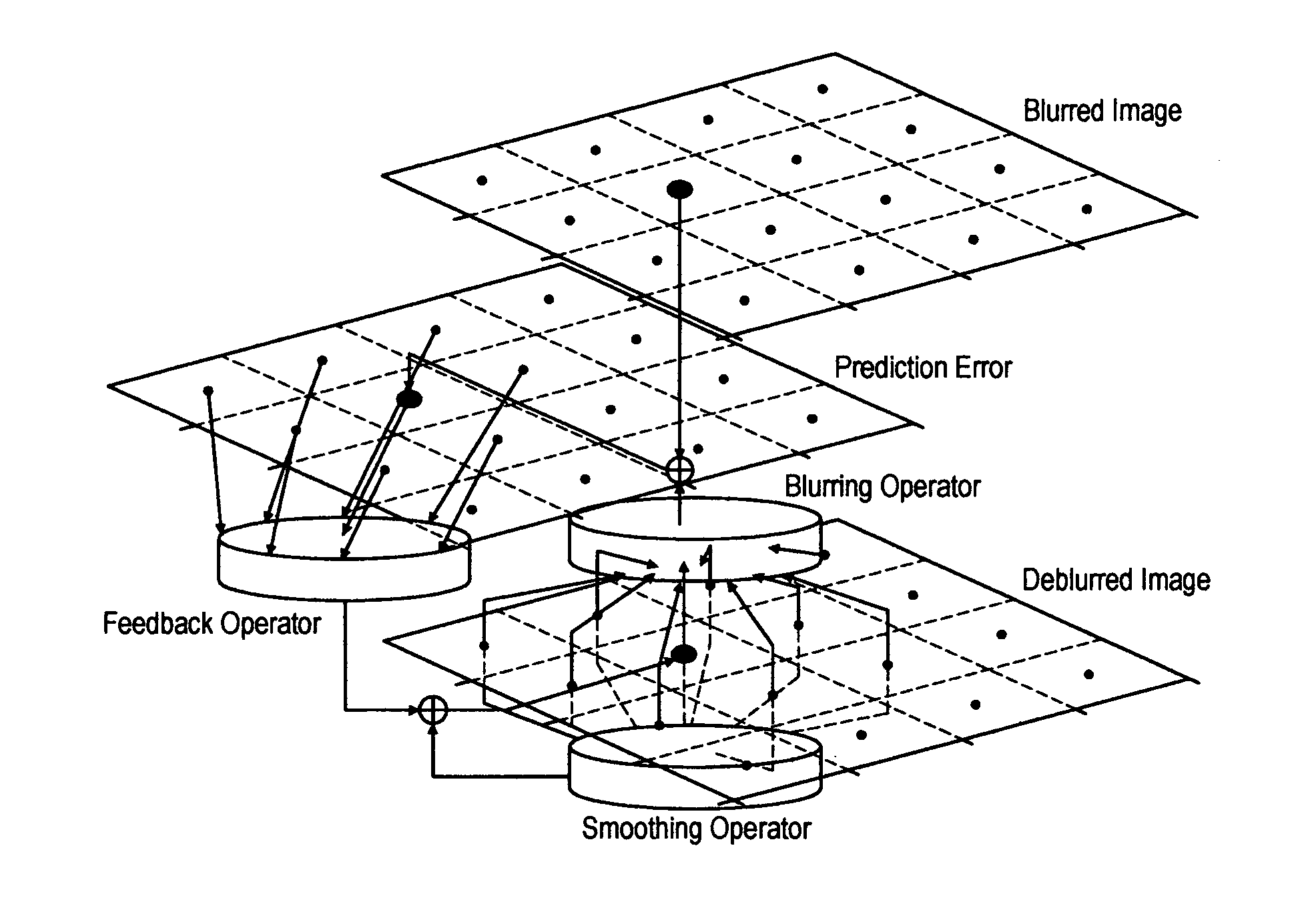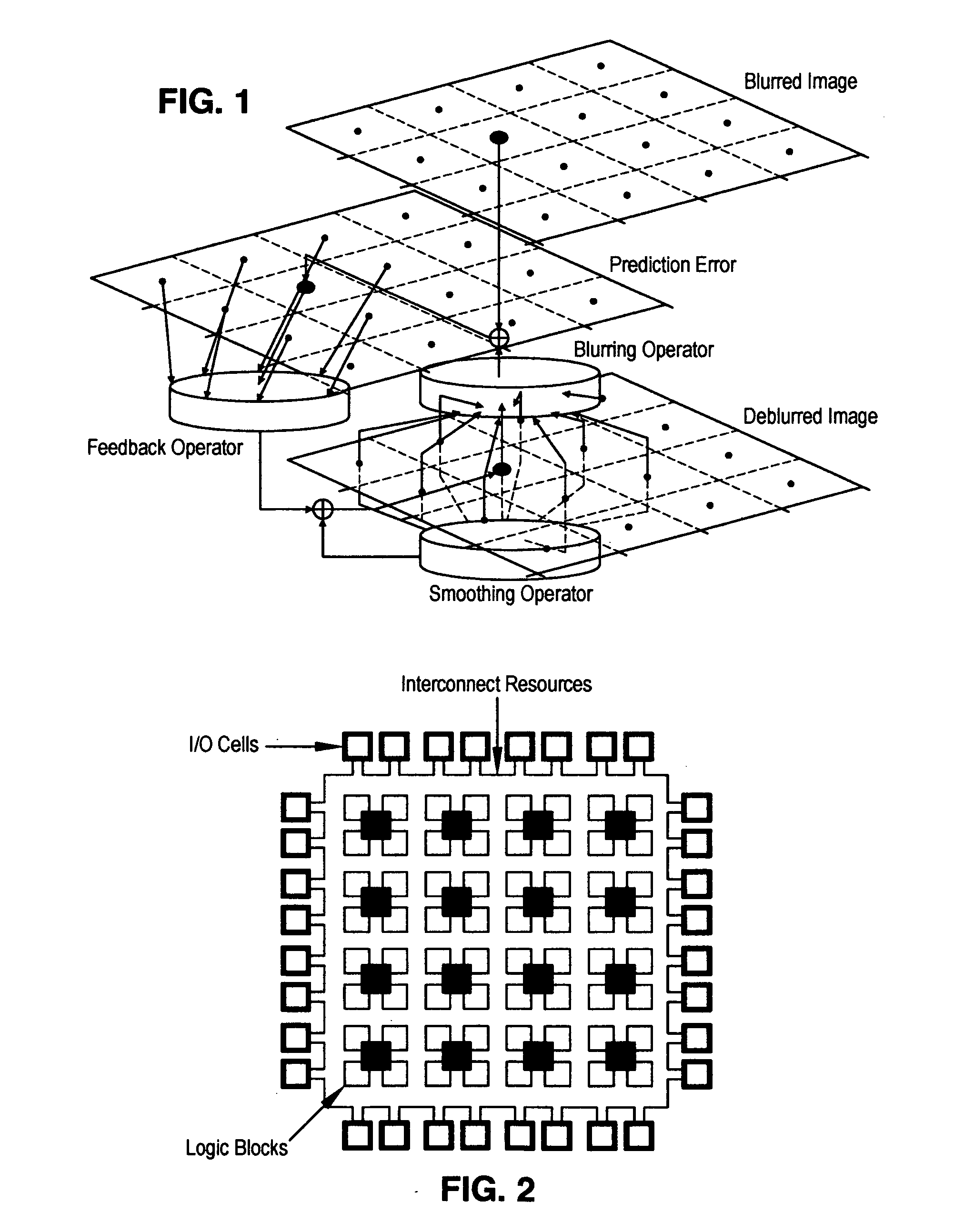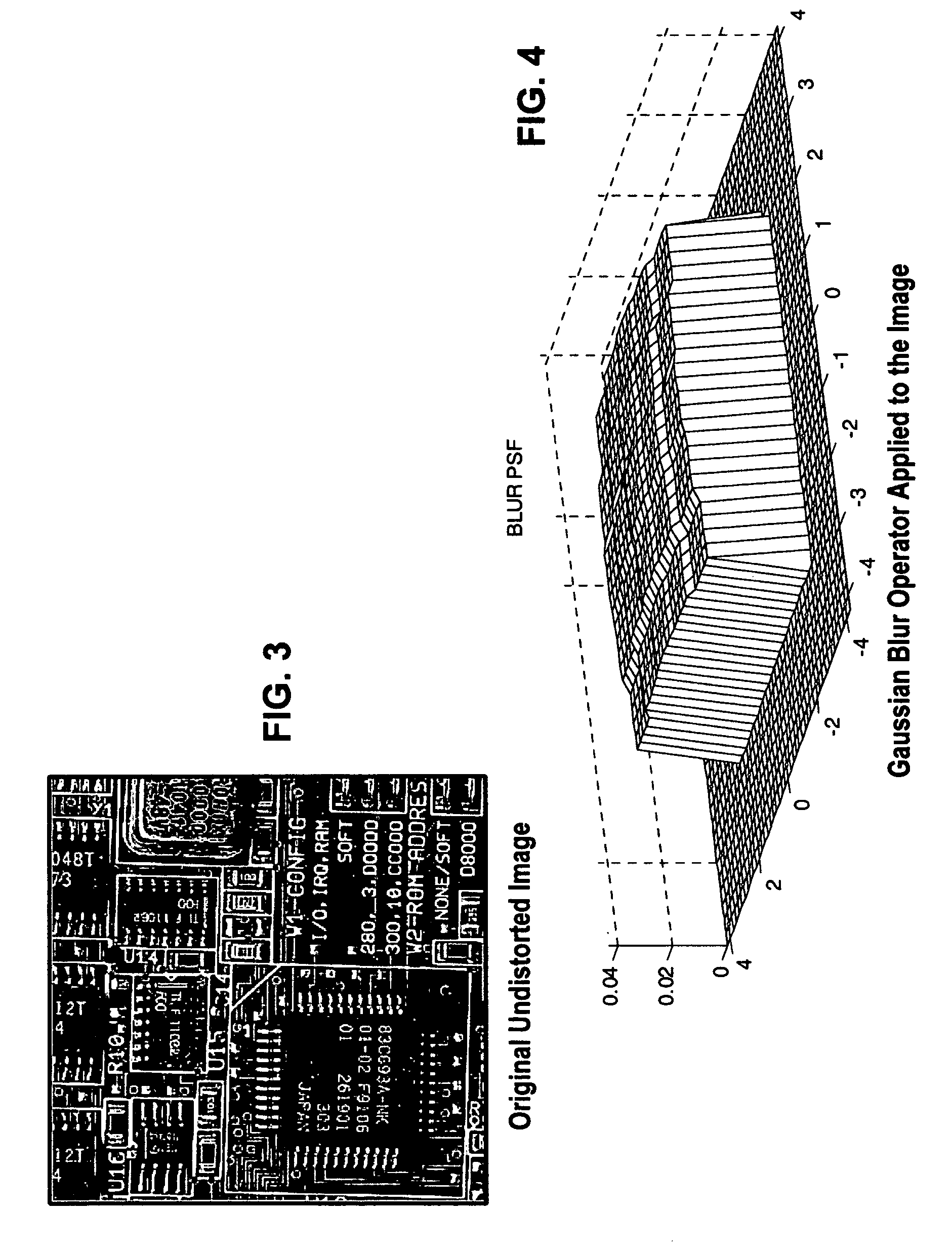Image deblurring with a systolic array processor
- Summary
- Abstract
- Description
- Claims
- Application Information
AI Technical Summary
Benefits of technology
Problems solved by technology
Method used
Image
Examples
example and illustration
[0045] The image in FIG. 3 was distorted with a localized Gaussian blur operator H with a PSF illustrated in FIG. 4. This PSF is a FIR operator with maximal N=3 spatial offset taps on each side for each of the two spatial dimensions. The optical transfer function h{tilde over ()}(v1 vs)) of the blur in FIG. 3 is displayed in FIG. 5. The original image of FIG. 3 was blurred with the operator H in FIG. 4 and a random noise e with a maximum magnitude 0.02 was added. The blurred and noisy image yb is shown in FIG. 6.
[0046] The feedback operators S and K have been designed as described in the previous section. The design assumed FIR operators with N=3 maximal spatial offset and 8-fold symmetry (the operator H has 8-fold symmetry). The following parameters have been used in the design: [0047] the convergence rate was chosen as r0=0.08 [0048] the recovery error bound was chosen as u0=0.3 [0049] the image noise bound was chosen as do=0.08 [0050] the in-band domain B was chosen as a set of ...
PUM
 Login to View More
Login to View More Abstract
Description
Claims
Application Information
 Login to View More
Login to View More - R&D
- Intellectual Property
- Life Sciences
- Materials
- Tech Scout
- Unparalleled Data Quality
- Higher Quality Content
- 60% Fewer Hallucinations
Browse by: Latest US Patents, China's latest patents, Technical Efficacy Thesaurus, Application Domain, Technology Topic, Popular Technical Reports.
© 2025 PatSnap. All rights reserved.Legal|Privacy policy|Modern Slavery Act Transparency Statement|Sitemap|About US| Contact US: help@patsnap.com



